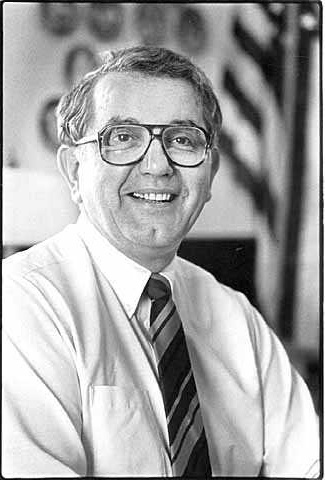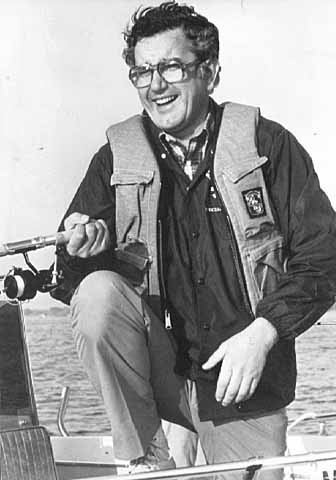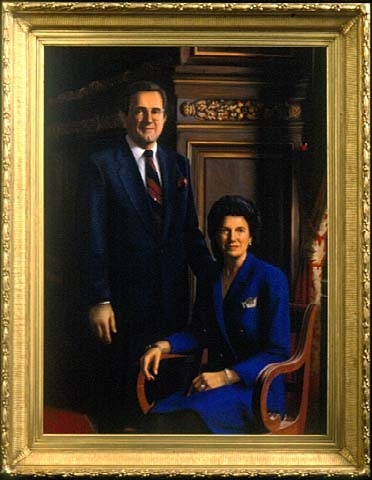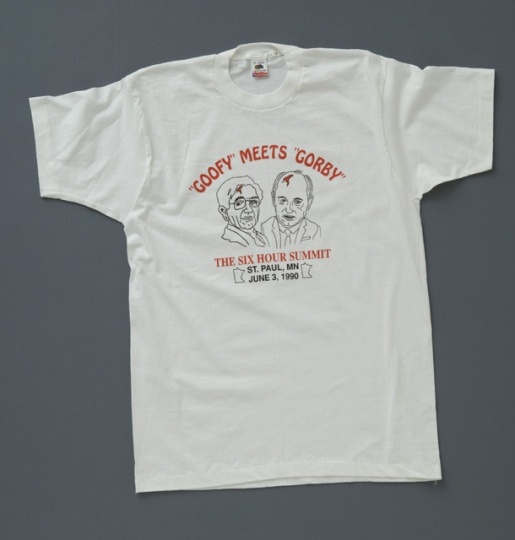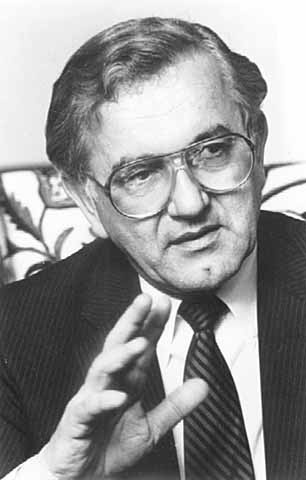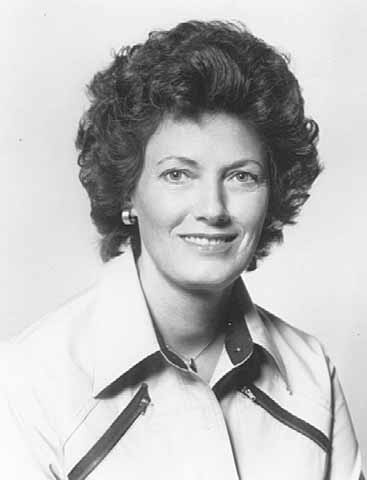Democrat Rudy Perpich was Minnesota's thirty-fourth and thirty-sixth governor. The son of an Iron Range mining family, he was recognized for his innovative ideas, support of women, and emphasis on foreign trade.
Rudolph George "Rudy" Perpich, Sr. was born June 27, 1928, in Carson Lake outside Hibbing. Perpich's father emigrated from Croatia to work the mines on Minnesota's Iron Range. There he met and married Perpich's mother, the daughter of Croatian immigrants.
In 1946, Perpich graduated from Hibbing High School and enlisted in the Army. He served two years and then attended Hibbing Junior College, where he was elected sophomore class president.
In 1954, Perpich earned a Doctor of Dental Surgery from Marquette University in Milwaukee and opened a dental office in Hibbing he would run until 1974. That September, he married Delores Helen "Lola" Simich, an Iron Range girl he had met at a malt shop six years before. The couple had two children: Rudy, Jr., in 1959 and Mary Sue the next year. In 1955 Perpich successfully ran for the Hibbing School Board. At the time, the Board faced an entrenched system of gender discrimination. Perpich and fellow board members voted to give female teachers equal pay and married women the opportunity to work full-time.
Perpich had long nurtured political ambitions. He made the jump from local to state politics when he won a seat in the State Senate. He served from 1963 to 1971.
In 1970, Perpich ran for lieutenant governor. In that era, lieutenant governors and governors ran separate races. Perpich won and served under DFL governor Wendell Anderson. That same election cycle, his younger brothers Tony and George won elections to the Minnesota Senate.
In 1976, Walter Mondale, a US senator from Minnesota, became vice president. Governor Wendell Anderson aspired to take over Mondale's vacant seat but had two years left in his term. Rather than wait to run for election in 1978, he resigned his governorship, elevating Perpich to the job. Perpich, in turn, appointed Anderson to the Senate as one of his first acts as head of state. These actions would come back to haunt both men.
Perpich was eager to put his imprint on Minnesota, but voters did not forget or forgive the office shuffle of two years earlier. Both men, along with nearly the entire DFL ticket, were voted out of office as part of the 1978 election's so-called Minnesota Massacre. Perpich was devastated. It appeared his political career was over.
He took a job as Control Data's trade representative in Austria, where he gained first-hand experience in the global economy, and decided he wanted another crack at Minnesota's governorship.
In 1982, against the odds, Perpich won the office. Over the next eight years, he gained a reputation as a man who was full of ideas and not afraid to try them out. This led to critics calling him "Governor Goofy." At one point, Perpich contemplated purchasing a run-down Austrian castle to house the University of Minnesota's foreign studies program. He proposed a chopsticks factory on the Iron Range to create jobs.
Other ideas met with greater success. He paved the way for the Mall of America, which opened in 1992 as the largest indoor mall in the United States, and brought Super Bowl XXVI to Minneapolis. He backed the construction of Olympics-class sports facilities and the Perpich Center for Arts Education, including the Perpich Center Arts High School.
Perpich served with the first female lieutenant governor. He also appointed more women to public office than any previous Minnesota governor, including three women judges to the new Court of Appeals and Rosalie Wahl, the first female judge in the nation to sit on a state Supreme Court.
Perpich believed his greatest achievement was to internationalize Minnesota business. His three years in Austria had taught him that if the state were to compete economically, it had to look overseas for business. The governor traveled extensively. He opened a trade office in Stockholm. He even invited Soviet leader Mikhail Gorbachev and wife, Raisa, to Minnesota. Their visit on June 3, 1990, was one of the highlights of Perpich's career.
That same year, Perpich ran for governor a third time. However, he lost to Republican Arne Carlson. Perpich died of colon cancer September 21, 1995, at his home in Minnetonka.








